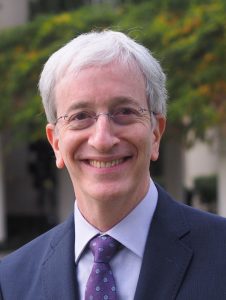August 2024 | Volume 17, Issue 4

Photo by Katrina Rochon

ABR Volunteer Roles Change With the Seasons
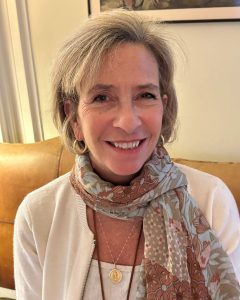 By Desiree Morgan, MD, ABR Governor
By Desiree Morgan, MD, ABR Governor
2024;17(4):1
As summer spirals toward fall, I hope you are refreshed by the more laid-back pace of life that warmer weather tends to bring. The dependable change in seasons is mirrored in the activities of the ABR, where in August we prepare for upcoming transitions in item-writing cycles, committee rosters, and leadership, as well as new projects for improvement of our certification processes. I pause to reflect with gratitude on the work of our volunteers who will rotate from their roles with us, and I am thankful for their enthusiastic support of our shared mission.
In this issue . . .
Outgoing ABR President Robert M. Barr, MD, looks back on his seven years on the ABR Board of Governors, and discusses, among other topics, the organization’s biggest challenges and accomplishments during his tenure.
ABR Secretary-Treasurer John A. Kaufman, MD, MS; ABR President-elect Cheri L. Canon, MD; and ABR Executive Director Brent Wagner, MD, MBA, announce plans for a multifaceted process of stakeholder engagement to gather input about the IR/DR certification exam structure.
Click HERE to read more.

Q&A With ABR Leadership: Reflections on Seven Years on Board of Governors
Outgoing ABR Board President Robert M. Barr, MD, shares thoughts on his ABR Board of Governors term.
What were the ABR’s biggest challenges during your time on the Board?
COVID presented the biggest challenge during my term on the Board of Governors. Exams across all disciplines were repeatedly postponed and then ultimately canceled when it became clear that the ABR would need to pivot to a completely remote testing paradigm for oral and computer-based exams to resume.
Other challenges were more predictable, including the continuing need to ensure that ABR certification is valid, credible, reasonable, and cost-effective. Lastly, making sure that the ABR continues to evolve appropriately in the face of the changing scientific and societal landscape is challenging. ABR content must remain up to date as innovations in practice are introduced, and our policies (for example, residency leave) need to be flexible enough to be inclusive and nondiscriminatory.
Click HERE to read more.

ABR To Gather Stakeholder Input on IR/DR Certification Exam Structure
 By John A. Kaufman, MD, MS, ABR Secretary-Treasurer; Cheri L. Canon, MD, ABR President-elect; and Brent Wagner, MD, MBA, ABR Executive Director
By John A. Kaufman, MD, MS, ABR Secretary-Treasurer; Cheri L. Canon, MD, ABR President-elect; and Brent Wagner, MD, MBA, ABR Executive Director
2024;17(4):3
The ABR continually considers the appropriateness of the certification process, including the validity and focus of its exams. Earlier this year, the ABR asked interventional radiologists to comment on (a) whether its exams in support of initial certification in interventional radiology/diagnostic radiology are effective in assessing competence in diagnostic radiology and (b) if not, what modifications might be considered? Initial responses from a few dozen interventional radiologists varied widely and have prompted consideration of a systematic and focused inquiry by the ABR.
Background
ABR certification in interventional radiology was developed to represent competency in two broad components: interventional radiology (IR) and diagnostic radiology (DR), together referred to as IR/DR. ABR certification, as recognized by the American Board of Medical Specialties (ABMS), describes interventional radiology as a specialty that “combines competence in imaging, image-guided minimally invasive procedures, and periprocedural patient care to diagnose and treat” a variety of benign and malignant conditions.1 Although the Accreditation Council for Graduate Medical Education (ACGME) refers to the residency pathway as “interventional radiology,” it is inextricably linked to DR and includes three years of training in the latter. The resulting certificate “signifies competence in both DR and IR” and the individual is “certified in both DR and IR.”2
Click HERE to read more.

Overlapping Roles of the ABR and Residency Programs Support High-Quality Patient Care
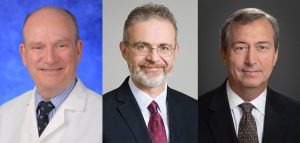 By Donald J. Flemming, MD, ABR Governor; Matthew B. Podgorsak, PhD, ABR Board of Trustees Chair; and Brent Wagner, MD, MBA, ABR Executive Director
By Donald J. Flemming, MD, ABR Governor; Matthew B. Podgorsak, PhD, ABR Board of Trustees Chair; and Brent Wagner, MD, MBA, ABR Executive Director
2024;17(4):4
The ABR and residency training programs pursue overlapping goals but use separate and distinct methods. Achieving certification requires rigorous training and passing a series of standardized exams. These two components support high-quality practice by radiologic science professionals (in radiology, radiation oncology, and medical physics), which ultimately serves the interests of patients and the public.
The mission of the residency programs is to graduate the best trained residents possible within the limits of available resources, and the program faculty aspire to develop medical professionals who exemplify excellence. Accreditation by the Accreditation Council for Graduate Medical Education (ACGME) (for physicians) or the Commission on Accreditation of Medical Physics Education Programs (CAMPEP) (for medical physics programs) requires compliance with standards that cover – among other elements – curricula, goals and objectives, faculty qualifications, assessment and feedback processes, and training environment. Overall, the program requirements define parameters within which programs must perform to support a setting that is conducive to effective learning. In recent years, a program’s efforts have been increasingly assessed by evaluating outcomes based on defined objectives that include the success rates of their residents with the certification process.
Click HERE to read more.

It’s a Success! Update on the ABR 16-Month Pathway in Nuclear Radiology
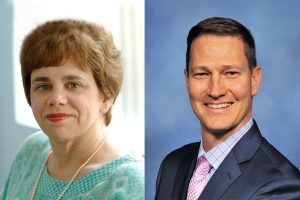 By M. Elizabeth Oates, MD, ABR Trustee, and David Laszakovits, ABR Communications Director
By M. Elizabeth Oates, MD, ABR Trustee, and David Laszakovits, ABR Communications Director
2024;17(4):5
Graduates of the redesigned ABR 16-month pathway in nuclear radiology (NR) are eligible for primary certification in diagnostic radiology (DR) or interventional radiology/diagnostic radiology (IR/DR) and subspecialty certification in NR (ABR-NR) (or, alternatively, may qualify for the American Board of Nuclear Medicine, ABNM). The pathway was developed to meet the increasing demand for subspecialty trained expertise in NR in academic and community practices, triggered by the explosion of new diagnostic and therapeutic radiopharmaceuticals (“radiotheranostics”) and the burgeoning use of hybrid molecular imaging technologies in clinical care and research.
Traditional Pathway vs. 16-Month Pathway
The traditional approach for becoming eligible for ABR-NR subspecialty certification involves completing a one-year fellowship in an NR or nuclear medicine (NM) program accredited by the Accreditation Council for Graduate Medical Education (ACGME) after graduating from residency training in DR or IR. The ABR 16-month pathway in NR leverages flexibility within DR and Integrated IR residency programs for the resident to spend up to 16 months in a discipline. Thus, pathway participants can gain eligibility for both primary and subspecialty certification during the standard four (DR) or five (IR) years of residency training.
Click HERE to read more.

Addressing the Independent IR Residency Trainee Gap
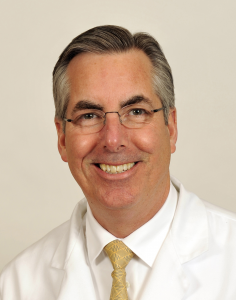 By James B. Spies, MD, MPH, ABR Associate Executive Director for Interventional Radiology
By James B. Spies, MD, MPH, ABR Associate Executive Director for Interventional Radiology
2024;17(4):6
In recent years, the number of trainees applying for a five-year integrated interventional radiology (IR) residency has been increasing but with a corresponding decrease in the applicants for the independent IR residency. It appears that medical students committed to IR are showing a preference to match directly from school into integrated residencies, and a diminishing proportion of diagnostic radiology (DR) residents are applying for an IR independent residency.
Regardless of the reasons, the trend accelerated with this year’s independent IR residency match, with a dramatic decrease in the proportion of available positions filled. Of the 159 available positions, only 93 (58.5%) filled via the match. Of the 73 programs participating, only 28 (38.4%) filled via the match. Many training programs depend on independent residents during PGY-5 and PGY-6 and are now facing gaps in their trainee staffing.
As a result, the ABR has received inquiries from program directors about whether international medical graduates (IMGs) can be recruited to fill these open positions. While technically this may be allowable under ACGME rules, there are some potential pitfalls for IMGs who have no other U.S. or Canadian training. Perhaps the most important is that completing an independent IR residency alone does not result in eligibility for ABR interventional radiology/diagnostic radiology (IR/DR) board certification. For current trainees, the only pathways to ABR board eligibility in IR/DR are: (1) completion of an integrated IR residency, (2) completion of a DR residency followed by an independent IR residency, (3) completion of the five-year IMG IR alternate pathway, or (4) completion of a four-year IMG DR alternate pathway followed by an independent IR residency.*
Click HERE to read more.

Meeting Continuing Certification Requirements: Assessment Timeline
By Matthew B. Podgorsak, PhD, ABR Board of Trustees Chair; Jennifer Stickel, PhD, Future ABR Trustee; Kalpana M. Kanal, PhD, and Robert A. Pooley, PhD, ABR Trustees; and Geoffrey S. Ibbott, PhD, ABR Associate Executive Director for Medical Physics
2024;17(4):7
The mission of the ABR is to ”certify that our diplomates demonstrate the requisite knowledge, skill, and understanding of their disciplines to the benefit of patients.” The ABR assesses whether diplomates who gained initial certification in 2002 or later maintain their knowledge and skills throughout their careers with the administration of the Continuing Certification (CC) program. Diplomates certified before 2002 hold lifetime certificates that do not need to be maintained, although some lifetime certificate holders have voluntarily entered the CC program. In this article, we will explain the process and timeline followed by the ABR to evaluate if a diplomate has met their CC requirements.
Participation guidelines for the CC program can be found here. A diplomate must meet four parts to maintain their certificate: (1) professionalism and professional standing; (2) lifelong learning; (3) assessment of knowledge, judgment, and skill; and (4) improvement in medical practice.
Click HERE to read more.

Early Career Radiation Oncologists Stay Busy as Volunteers

By Rodney Campbell, ABR Communications Manager
2024;17(4):8
As members of the ABR’s Radiation Oncology Initial Certification Advisory Committee, Drs. Michael LeCompte and Joy Ogunmuyiwa serve as intermediaries between the organization and candidates. Their voices are vital as the ABR seeks to improve the initial certification process for radiation oncologists.
Their thoughts are also in demand across their specialty. Both serve their field as volunteers for associations and societies.
“An initiative across radiation oncology has been to ensure that those in their early careers are having their voices heard,” Dr. LeCompte said.
The two have filled that need by earning leadership roles for various organizations. Dr. LeCompte recently served as chair of the Association of Residents in Radiation Oncology (ARRO) and will soon take the resident ex-officio seat on the American Society for Radiation Oncology (ASTRO) Board of Directors. He’s also part of ASTRO’s Health Equity, Diversity, and Inclusion Steering Committee
Click HERE to read more.

No ‘Evil Scientist,’ He Works to Make Exams Fair and Relevant
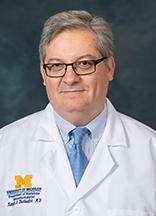
By Rodney Campbell, ABR Communications Manager
2024;17(4):9
Physicians and physicists who work with trainees often benefit from serving as ABR volunteers. It’s definitely been a worthwhile experience for Ken Buckwalter, MD, MBA.
Dr. Buckwalter has volunteered with the ABR for 15 years as an oral examiner and question writer for the Diagnostic Radiology Certifying Exam. In his day jobs, he has instructed residents and fellows, inspiring him to learn how ABR exams are constructed, so he can help the organization continually improve those assessments.
“I was curious about the process,” he said. “If you’re training residents and fellows, you want to understand what the exam looks like.”
A clinical professor of radiology and associate chair and associate chief medical information officer in the division of musculoskeletal radiology at the University of Michigan Medical School, Dr. Buckwalter was initially surprised by the work and assessment involved with writing exam questions.
Click HERE to read more.

Exam Curiosity Inspired Him to Become Volunteer
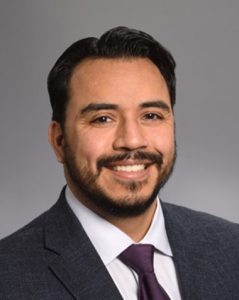
By Rodney Campbell, ABR Communications Manager
2024;17(4):10
When he was a fellow at the University of Texas MD Anderson Cancer Center in Houston, there was one thing that Richard Castillo, PhD, wanted to avoid: senior colleagues randomly testing his knowledge in hallways or break rooms.
“I would walk by the wrong person, and they would say, ‘Oh, hey, Richard, what’s this or that?’” he said. “And I would answer, ‘Ah, I don’t know.’ Then I would want to run the other way.”
Dr. Castillo survived the ordeal and earned his initial certification in therapeutic medical physics eight years ago. Now, he finds himself on the question-asking side. Dr. Castillo, who is being promoted to professor at Emory University’s School of Medicine on September 1, will serve as an ABR medical physics oral examinee for the third time this fall.
Curiosity about how initial certification exams are put together led him to apply to become a volunteer.
Click HERE to read more.

ABR President-elect Canon Named Professor Emerita at UAB

2024;17(4):11
ABR President-elect Cheri L. Canon, MD, was recently named professor emerita in the department of radiology at the University of Alabama at Birmingham (UAB) Heersink School of Medicine.
Dr. Canon also serves as president of the University of Alabama Health Services Foundation and chief physician executive of the UAB Health System.
Dr. Canon will begin her two-year term as ABR president at the conclusion of the fall board meeting in September. She started as an ABR volunteer in 2010, joined the Board of Trustees in 2016, and was named to the Board of Governors in 2018.
AAPM 2024 Fellows Include Nine ABR Volunteers
2024;17(4):12
Nine ABR medical physics volunteers have been named Fellows by the American Association of Physicists in Medicine (AAPM) for 2024: Tyler Blackwell, MS; Richard Castillo, PhD; Yusung Kim, PhD; Mi-Ae Park, PhD; Jennifer Pursley, PhD; Vikren Sarkar, PhD; Jiajian Shen, PhD; Matthew Studenski, PhD; and Christopher Tien, PhD.
AAPM is one of the world’s leading medical physics organizations with a mission to advance medicine through excellence in the science, education, and professional practice of medical physics.
The AAPM established the category of Fellow to honor members who have made significant contributions through one or more of the following:
- Service to AAPM.
- The advancement of medical physics knowledge based on independent original research or development.
- Medical physics educational activities, especially regarding the education and training of medical physicists, medical students, medical residents and allied health personnel.
- Leadership in the practice of medical physics.
Of approximately 10,000 AAPM members, only 767 (6.8%) have been awarded the prestigious Fellow distinction.

July 24 Blog
‘Black Box’ Curiosity Led Him to Become ABR Volunteer
July 16 Blog
Exam Day Help Desk Eases Core Candidate’s Experience
July 9 Blog
Laughter Lightens the Challenge of Writing Exam Questions
July 2 Blog
Continuing Certification Committees Succeed Through Diplomate Feedback
June 25 Blog
Staying Away from Forfeited Questions is Goal for OLA Participants
June 18 Blog
Father Knows Best? Medical School Student Leaning Toward Radiology



